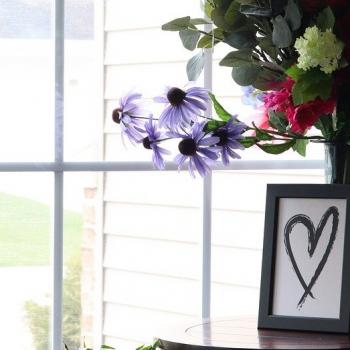* not to be confused with this springtime.
I spoke with my sister in L.A. yesterday and she was sad this year that spring had come and yet nothing had changed in her city. “Beautiful day today, beautiful day yesterday, beautiful day tomorrow,” she lamented. It seems odd, but there is a cost to living in city where the weather patterns alter only slightly with the seasons. “Our bodies,” she noted, “are made for seasons.”
At least I know mine is, and apparently hers too. Perhaps its our ancestry: 1/4 Polish, 1/4 English, 1/4 Scottish, and 1/2 Irish (the last one is to see if you’re any good at math, and also to emphasize that it’s the ancestry that we most identify with). In truth we’re roughly a 1/4 each, but we all know these are just convenient approximations and mere labels. History, like the rest of reality, evades cookie-cutters and precise measurements.
I just found out last spring, for instance, that my Polish grandma Bogowski (previously spelled Bojgowski, an offshoot of 19th century Polish royalty) also had an Irish grandmother.
My sister and I are also children of Montana, a state of dramatic seasonal changes. Even as kids in the ’80s, the summers were dry and hot with many days in the upper 90s and the occasional 100+ degree day or two. Then, sometimes it would snow in August. After what were usually mellow and beautiful autumns, it always seemed that we would get our first real blizzard on Halloween night – we’d sprint from a parent’s car to a door, shout out “tk-r-teet” as fast as possible, collect our goodies and sprint back to the car, yelling “annnks” over our shoulders at the already closed doors.
In the rural Helena valley, where we grew up, wind was always an issue. In the spring and summer it was nice – house-shaking and howling at times – but nice. In the winter though it could pull the heat through as many layers as mom could stuff us in. We learned to walk backward or sideways with our hoods pulled tight to avoid any direct exposure. If you had to walk straight into it you kept your face pointed straight down, watching your own feet as you walked.
So when spring did come it was like the end of a really long, unhappy novel. At some point we had lost touch with the reality that winter would end, that it was just one season. It had become everything. As if hiking a mountain with countless false summits, we simply began to believe it would not end as we clung to daily survival in this new world of blinding white and wind.
But it happened. And like so many novel’s endings, it just happened. It was unexpected. One day it was 25 degrees, then 45 and sunny and we would play in the snow. Then 50 for a couple days and soon the snow was gone – at last, for good (ignoring the freak snow-storms that always came in either May or June to remind us of winter’s wrath).
And so it is now; winter’s strong grip is breaking. The hilltop snows are dissapearing and the sun is shining long and bright. Time to be out enjoying it (that is, working on a presentation).











